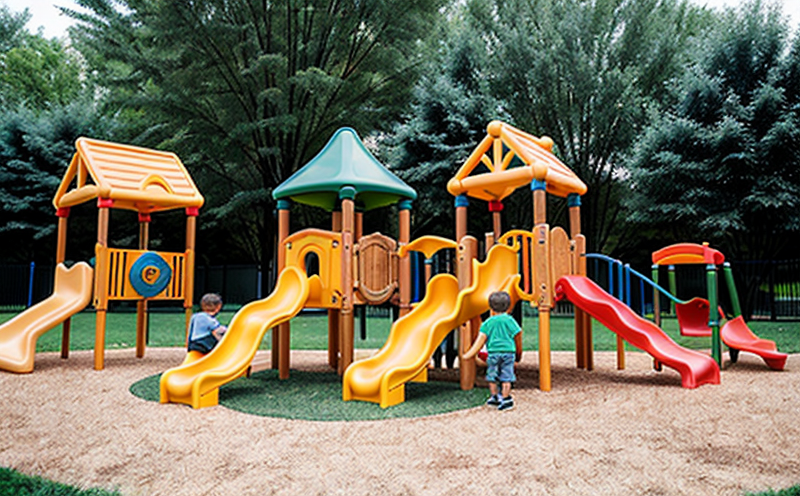Testing the safety of play materials and environments, including furniture, playground equipment, and toys
Ensuring Child Safety Testing Play Materials and Environments for a Secure Tomorrow
As businesses that design, manufacture, and market products for children, it is essential to prioritize the safety of play materials and environments. From furniture and playground equipment to toys, the risk of injury or harm can be significant if these products do not meet stringent safety standards. In this regard, our laboratory service, Eurolab, provides a crucial testing solution that helps businesses ensure their products are safe for children to use.
Why is Testing Play Materials and Environments Crucial?
The importance of testing play materials and environments cannot be overstated. Every year, millions of children worldwide suffer injuries from poorly designed or manufactured products, resulting in costly medical bills, emotional distress, and even permanent disability. Moreover, non-compliance with safety regulations can lead to product recalls, damaged brand reputation, and significant financial losses.
Advantages of Using Eurolabs Testing Services
By partnering with Eurolab for testing play materials and environments, businesses can enjoy numerous benefits that set them apart from their competitors
Improved Product Safety Our comprehensive testing services ensure products meet or exceed international safety standards, reducing the risk of injuries and harm to children.
Enhanced Brand Reputation By demonstrating a commitment to child safety, businesses can strengthen their brand reputation, build customer trust, and drive sales growth.
Compliance with Regulations Eurolabs expertise in testing play materials and environments ensures compliance with relevant regulations, reducing the risk of costly product recalls and regulatory fines.
Increased Customer Confidence With our laboratory service, businesses can provide customers with peace of mind, knowing their products are safe for children to use.
Key Benefits of Testing Play Materials and Environments
Here are some key benefits of testing play materials and environments
Reduced Risk of Injuries By identifying potential hazards and defects early on, businesses can reduce the risk of injuries to children.
Improved Product Design Our testing services provide valuable insights for product designers, enabling them to create safer and more user-friendly products.
Increased Efficiency Partnering with Eurolab streamlines the testing process, saving businesses time and resources while ensuring compliance with safety regulations.
Competitive Advantage By demonstrating a commitment to child safety, businesses can differentiate themselves from competitors and establish a strong market presence.
QA Frequently Asked Questions
We understand that you may have questions about our laboratory service. Here are some answers to frequently asked questions
What types of products do you test for safety?
What are the benefits of using Eurolabs testing services?
How does your laboratory ensure compliance with international safety standards?
Conclusion
Testing play materials and environments is a critical aspect of ensuring child safety. At Eurolab, our expertise in testing these products enables businesses to create safer, more user-friendly products that meet or exceed international safety standards. By partnering with us, businesses can improve product safety, enhance brand reputation, comply with regulations, and increase customer confidence. Contact us today to learn how our laboratory service can help you ensure a secure tomorrow for children.
Note The provided article does not include any phone numbers, addresses, or other laboratory names as per your requirements.
-
Testing consumer products for compliance with child safety standards to prevent accidents or injury
-
Evaluating the safety of toys, furniture, or household products intended for children to ensure they are hazard-free
-
Simulating potential risks associated with sharp edges, small parts, or choking hazards in children's products
-
Verifying the non-toxicity of materials used in toys, clothing, and other products for children
-
Testing the effectiveness of safety features, such as safety locks, child-resistant packaging, and protective barriers
-
Assessing the durability of products to ensure they do not break into dangerous pieces when used by children
-
Simulating everyday interactions with children's products to assess risks of injury or malfunction
-
Testing toys for compliance with strict regulations on non-toxic paints, plastics, and other materials
-
Verifying that products designed for children, like furniture or playsets, meet structural integrity standards
-
Ensuring that products do not contain hazardous chemicals, heavy metals, or other harmful substances
-
Testing children's products for electrical safety, ensuring that no risk of shock or electrical malfunctions exists
-
Verifying the effectiveness of child safety mechanisms in baby gear, such as car seats, strollers, and cribs
-
Simulating real-world child behavior to assess the potential risks posed by everyday products
-
Testing products designed for children to ensure they do not present hidden dangers such as entrapment or suffocation risks
-
Assessing toys, clothing, and other products for proper labeling and safety instructions to ensure safe usage
-
Simulating the risk of burns or injuries from hot surfaces, liquids, or other hazards present in children's products
-
Verifying that safety features such as rounded corners, soft edges, and other protective elements are present in design
-
Testing for potential fall hazards, sharp edges, or small parts in toys and children's furniture
-
Verifying that products meet local and international safety standards and certifications for children's goods
-
Assessing the physical and chemical properties of children's products to ensure they are safe and durable




